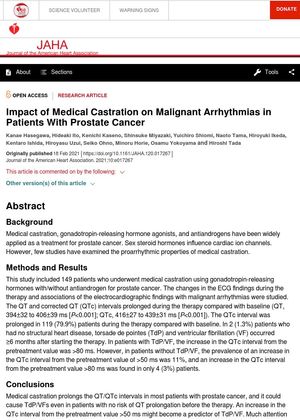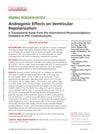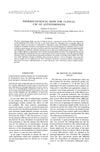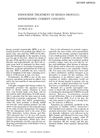Impact of Medical Castration on Malignant Arrhythmias in Patients With Prostate Cancer
February 2021
in “
Journal of the American Heart Association
”

TLDR Medical castration in prostate cancer patients can increase the risk of serious heart rhythm problems, so it's important to monitor heart activity during treatment.
The study "Impact of Medical Castration on Malignant Arrhythmias in Patients With Prostate Cancer" involved 149 patients and found that medical castration, using gonadotropin-releasing hormones with/without antiandrogen, prolonged the QT and corrected QT (QTc) intervals in 79.9% of patients. This could lead to torsade de pointes (TdP) and ventricular fibrillation (VF), even in patients with no prior risk of QT prolongation. TdP/VF occurred in 1.3% of patients, typically 6 months or more after starting medical castration. An increase in the QTc interval from the pretreatment value >50 ms might predict TdP/VF. The study concluded that monitoring the QTc interval, especially the change in QTc interval (ΔQTc), is crucial throughout medical castration to prevent malignant arrhythmias.





